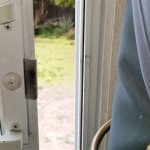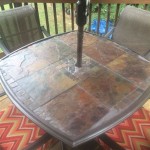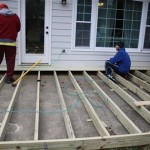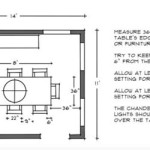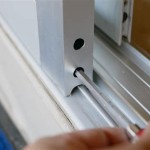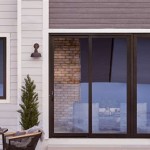DIY Patio Coffee Table Ideas for Enhanced Outdoor Living
The patio coffee table serves as a central element in outdoor living spaces, providing a surface for drinks, snacks, books, and decorative items. Rather than purchasing a prefabricated table, many homeowners opt to construct their own, allowing for customization in terms of size, style, and materials. This article explores a range of DIY patio coffee table ideas, offering guidance for individuals seeking to enhance their outdoor areas with personalized and functional furniture.
Repurposing Materials for Unique Patio Coffee Tables
One of the most appealing aspects of DIY projects is the opportunity to repurpose existing materials, minimizing waste and creating unique, one-of-a-kind pieces. Numerous materials can be transformed into stylish and functional patio coffee tables, offering a sustainable and cost-effective approach to outdoor furniture design.
Pallet Coffee Tables: Wooden pallets are readily available and can be easily transformed into rustic coffee tables. The inherent texture and imperfections of the wood add character and a weathered aesthetic. To create a pallet coffee table, begin by sanding the pallet to remove splinters and rough edges. Filling any large gaps with wood filler can improve the surface. Applying a sealant or stain will protect the wood from the elements and enhance its appearance. Casters can be added to the bottom for mobility, and a glass or wooden top can be added for a smoother surface. Consider disassembling selected parts of the pallet to create a custom design.
Cable Spool Coffee Tables: Large wooden cable spools are another excellent repurposed material. These spools are sturdy and offer a substantial base for a coffee table. Like pallets, they require sanding and sealing to prepare them for outdoor use. Cable spools can be left in their natural circular shape or cut in half to create a semi-circular table. Painting, staining, or adding decorative elements such as mosaic tiles can further customize the spool. Consider incorporating a lazy Susan into the center of the table for added functionality.
Upcycled Door Coffee Tables: An old door can be repurposed into a charming coffee table. The door can be left as is, with its existing hardware and paint, for a vintage aesthetic, or it can be sanded and repainted to match the patio decor. To create the table, attach legs to the bottom of the door. Legs can be purchased from a hardware store or repurposed from other furniture. Consider adding a glass top to protect the door's surface and provide a smooth, even surface. The door's original features, such as panels and knobs, can be incorporated into the design for added character.
Reclaimed Wood Coffee Tables: Reclaimed wood, sourced from old barns, buildings, or other structures, offers a rich history and unique aesthetic. The wood's weathered appearance and imperfections add character and a sense of authenticity. Reclaimed wood can be used to construct the entire table, from the frame to the tabletop. When working with reclaimed wood, it is essential to ensure that it is free from nails, screws, and other debris and that it has been properly treated to prevent insect infestation. A clear sealant will protect the wood from the elements while preserving its natural beauty.
Utilizing Concrete for Modern and Durable Patio Tables
Concrete is an increasingly popular material for outdoor furniture due to its durability, versatility, and modern aesthetic. A concrete coffee table can withstand the elements and provide a stylish focal point for a patio space. While working with concrete requires some technical skills, the result is a long-lasting and visually appealing piece of furniture.
Poured Concrete Coffee Tables: Poured concrete tables typically involve creating a mold into which the concrete mixture is poured. The mold can be made from wood, melamine, or other materials. The shape and size of the mold will determine the dimensions of the table. It is crucial to reinforce the concrete with wire mesh or rebar to prevent cracking. After pouring the concrete, it must be allowed to cure for several days. Once cured, the mold can be removed, and the concrete surface can be polished or sealed to achieve the desired finish. Legs can be attached to the concrete slab, or the concrete can be cast with integrated legs.
Concrete Block Coffee Tables: Concrete blocks offer a simpler approach to creating a concrete coffee table. These blocks can be arranged in various configurations to create a base for the table. A wooden or concrete tabletop can be placed on top of the blocks to create the surface. The blocks can be painted or stained to match the patio decor, or they can be left in their natural gray color for an industrial look. This approach is relatively inexpensive and requires minimal construction skills.
Concrete and Wood Combination Coffee Tables: Combining concrete with wood creates a visually appealing contrast and adds warmth to the design. A concrete tabletop can be paired with a wooden base, or vice versa. For example, a concrete slab can be supported by wooden legs or a wooden frame. The wood can be stained or painted to complement the concrete. When combining these materials, it is important to ensure that they are properly sealed to prevent moisture damage and maintain their appearance.
Polishing and Sealing Concrete: Regardless of the method used to create a concrete coffee table, polishing and sealing are essential steps. Polishing the concrete surface will create a smooth, even finish. This can be achieved using a concrete grinder with progressively finer grit pads. Sealing the concrete will protect it from stains, water damage, and UV rays. Several types of concrete sealers are available, including penetrating sealers and topical sealers. A penetrating sealer will soak into the concrete and provide long-lasting protection, while a topical sealer will create a protective layer on the surface.
Building Coffee Tables from Standard Lumber
Working with standard lumber allows for precise control over the design and dimensions of the coffee table. Lumber, such as pine, cedar, or redwood, can be easily cut, shaped, and assembled to create a variety of styles, from rustic to modern. This approach requires basic woodworking skills and tools, but the result is a custom-built table that perfectly complements the patio space.
Simple Frame Coffee Tables: A simple frame coffee table consists of a rectangular or square frame with legs attached to the corners. The frame can be constructed from 2x4 or 4x4 lumber. The tabletop can be made from the same lumber or from plywood or other materials. The frame can be assembled using screws, nails, or wood glue. Legs can be attached using screws or bolts. This design is straightforward and can be easily customized to fit the desired dimensions.
Plank Top Coffee Tables: A plank top coffee table features a tabletop constructed from individual planks of wood. The planks can be arranged side by side and attached to a frame or directly to the legs. This design offers a rustic aesthetic and allows for variations in the width and spacing of the planks. Different types of wood can be used to create a unique pattern or texture. The planks should be securely fastened together to prevent movement and ensure a stable surface.
Storage Coffee Tables: Adding storage to a patio coffee table can enhance its functionality and provide a place to store outdoor accessories, such as cushions, blankets, or gardening tools. Storage can be incorporated into the design in various ways, such as adding shelves underneath the tabletop or creating a lift-top table with hidden storage inside. When designing a storage coffee table, it is important to ensure that the storage compartment is protected from the elements.
Finishing and Protecting Lumber: Protecting lumber from the elements is essential for ensuring its longevity. Several types of finishes can be used, including stains, paints, and sealants. Stains will enhance the natural grain of the wood while providing some protection from moisture and UV rays. Paints will provide a more opaque finish and offer greater protection. Sealants will create a waterproof barrier and prevent the wood from rotting or warping. When selecting a finish, it is important to choose one that is specifically designed for outdoor use.
Designing with Sustainability in Mind: When embarking on a DIY patio coffee table project, consider the environmental impact of the materials and construction methods used. Opting for reclaimed or recycled materials, such as pallets, cable spools, or reclaimed wood, minimizes waste and reduces the demand for new resources. When purchasing new lumber, choose sustainably harvested wood that is certified by organizations such as the Forest Stewardship Council (FSC). Use low-VOC (volatile organic compound) paints and sealants to minimize air pollution. Dispose of waste materials responsibly and recycle whenever possible. By incorporating sustainable practices into the project, the environmental footprint can be reduced and a positive contribution to the environment made.
Adding Personal Touches: The beauty of DIY projects lies in the ability to add personal touches and create a unique piece of furniture that reflects individual style and preferences. Consider incorporating decorative elements such as mosaic tiles, stencils, or hand-painted designs. Adding unique hardware, such as vintage knobs or pulls, can also enhance the table's aesthetic. Personalizing the coffee table with meaningful objects, such as pressed flowers or seashells embedded in resin, can create a treasured keepsake. These personal touches will transform the coffee table from a functional piece of furniture into a cherished work of art.
Ensuring Safety and Stability: Prioritizing safety and stability is paramount when constructing a DIY patio coffee table. Ensure that the table is structurally sound and can support the weight of objects placed on it. Use appropriate fasteners, such as screws or bolts, to securely join the various components of the table. Avoid using nails alone, as they may loosen over time. Double-check measurements and ensure that all cuts are accurate. Sand down any sharp edges or corners to prevent injuries. If children or pets will be using the patio, consider adding rounded edges or bumpers to further enhance safety. Regularly inspect the table for any signs of wear or damage and make repairs as needed.

Easy Diy Outdoor Coffee Table Build

Easy Diy Outdoor Coffee Table Build

Diy Outdoor Coffee Table Angela Marie Made
:strip_icc()/103201803-2c6d568cfcde46dfbb69ac301d6248c1.jpg?strip=all)
How To Make An Industrial Outdoor Coffee Table

Diy Outdoor Table Ideas With Cool And Convenient Designs

Diy Outdoor Coffee Table Ideas Decor Patio Side

20 Diy Outdoor Table Ideas For Your Deck Or Patio The Handyman S Daughter

Diy Outdoor Coffee Table How To Make An With Beverage Cooler

20 Diy Outdoor Table Ideas For Your Deck Or Patio The Handyman S Daughter

How To Make An Outdoor Tile Coffee Table Using Leftover Tiles


